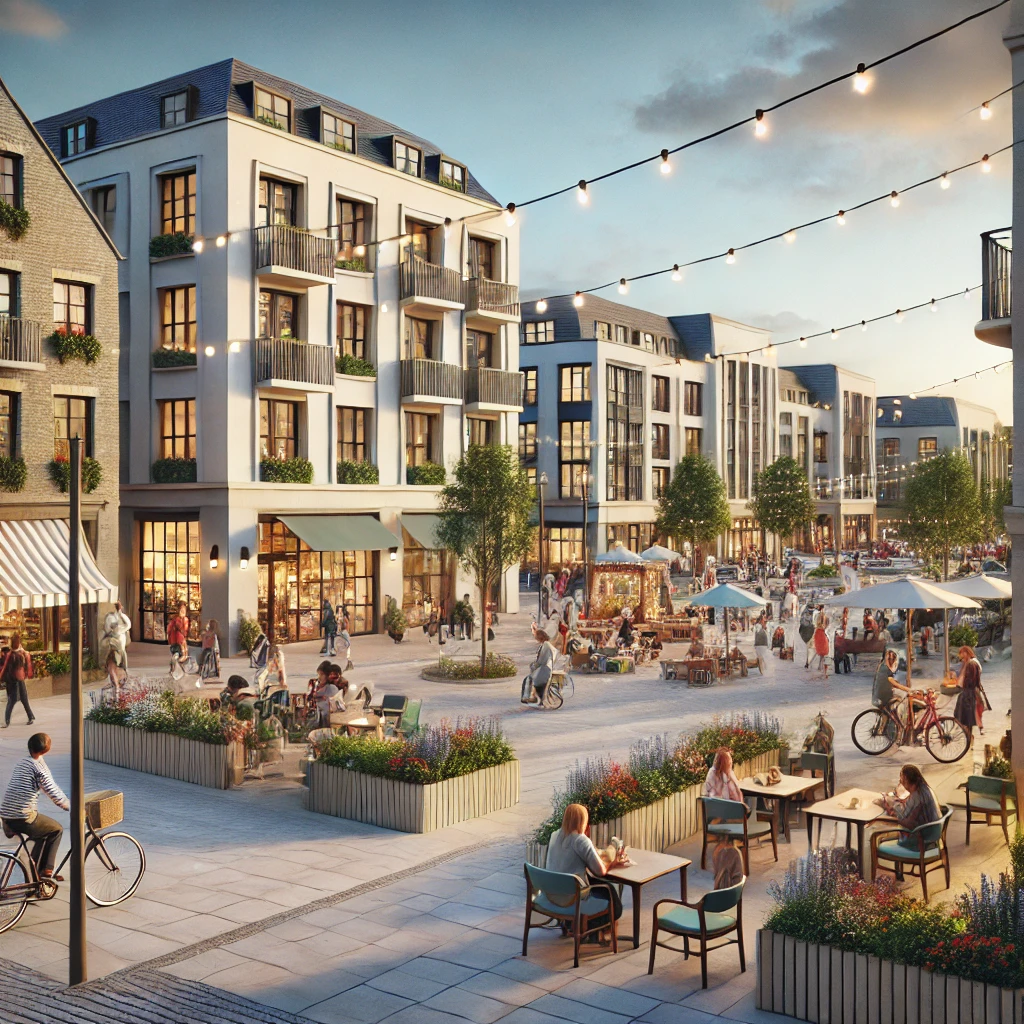In the ever-changing urban landscape, adaptive reuse has emerged as a transformative approach to real estate development, particularly in creating vibrant mixed-use hubs. By repurposing underutilized or outdated buildings, such as old warehouses, shopping malls, or industrial zones, developers are breathing new life into spaces that were once overlooked. This process is not just about revitalization but also about aligning real estate projects with the modern demands of urban living: sustainability, functionality, and community-driven spaces.
What is Adaptive Reuse?
Adaptive reuse is the practice of repurposing an existing building for a use other than what it was originally designed for. Instead of demolishing structures and starting anew, developers retain the foundation, history, and architectural character of the property while redesigning it for modern, multi-functional purposes.
This approach seamlessly aligns with the goals of mixed-use developments, which prioritize integrating residential, commercial, retail, and recreational spaces to meet today’s urban needs.
Why Adaptive Reuse is Perfect for Mixed-Use Development
1. Sustainability and Environmental Impact
Adaptive reuse is inherently more sustainable than new construction. By reusing existing structures, developers can significantly reduce:
- Construction Waste: Avoiding demolition reduces the waste that would otherwise end up in landfills.
- Carbon Emissions: Reusing materials lowers the carbon footprint associated with new construction processes.
- Energy Use: Existing infrastructure can often be upgraded with energy-efficient systems, reducing long-term consumption. For cities focused on achieving sustainability goals, adaptive reuse represents a practical solution that balances environmental responsibility with economic development.
2. Preserving History and Character
Many older buildings feature architectural details and design elements that are difficult to replicate today. Adaptive reuse preserves the historical character of a space while blending it with modern amenities.
These projects often become landmarks within their communities, fostering a sense of identity and pride. For mixed-use developments, this uniqueness can attract residents, businesses, and visitors looking for spaces with a story.
3. Cost and Time Efficiency
Revitalizing existing buildings can often be more cost-effective than demolishing and starting from scratch:
- Existing Infrastructure: Foundations, framing, and utilities can often be retained and upgraded.
- Faster Timelines: Adaptive reuse projects may have shorter construction timelines compared to new developments.
This economic efficiency appeals to developers and investors looking for quicker returns while maintaining high-value outcomes.
4. Meeting Modern Urban Needs
Many underutilized spaces, such as vacant malls or industrial buildings, are located in prime urban locations. By transforming these spaces into thriving mixed-use hubs, developers can meet growing urban demands:
- Residential Units: Address housing shortages in walkable urban areas.
- Retail and Dining: Revitalize shopping experiences with modern amenities and curated retail spaces.
- Workspaces: Incorporate co-working offices or commercial spaces that attract professionals.
- Community Spaces: Add cultural venues, parks, and gathering areas that bring residents together.
The Benefits of Adaptive Reuse in Mixed-Use Projects
- Improved Land Use Efficiency
Adaptive reuse projects maximize the value of underutilized land while meeting urban density goals. By integrating multiple uses, these spaces become vibrant hubs of activity where residents, workers, and visitors coexist. - Economic Growth and Community Revitalization
Transforming an underutilized building into a mixed-use hub stimulates local economies by:
- Attracting businesses and creating jobs.
- Increasing property values.
- Revitalizing neglected neighborhoods, making them attractive to new residents and investors.
- Resilience and Future-Proofing
By combining residential, commercial, and cultural uses, adaptive reuse projects are inherently more resilient to market shifts. If one sector underperforms (e.g., retail), other components, such as residential or office spaces, can maintain overall project stability.
Key Features of Successful Adaptive Reuse in Mixed-Use Hubs
For adaptive reuse projects to thrive, they must balance historic preservation with modern functionality. Key features include:
- Smart Building Upgrades: Integration of IoT technology, energy-efficient systems, and smart parking solutions.
- Open, Flexible Design: Spaces that can accommodate multiple uses, such as co-living, co-working, or event spaces.
- Sustainable Retrofits: Incorporating green roofs, natural lighting, and eco-friendly materials to improve energy efficiency.
- Community-Oriented Spaces: Adding parks, plazas, or cultural venues to create gathering points that strengthen the surrounding community.
Challenges of Adaptive Reuse in Mixed-Use Projects
While adaptive reuse is a compelling approach, it comes with unique challenges:
- Structural Limitations: Older buildings may require significant retrofitting to meet modern safety codes and energy standards.
- Regulatory Hurdles: Developers must navigate zoning laws, building codes, and preservation guidelines, which can add complexity.
- Balancing Old and New: Successfully integrating modern amenities while preserving the original structure requires thoughtful design and execution.
Overcoming these challenges often involves collaborating with experts in architecture, project management, and urban planning to ensure the project’s success.
Why Adaptive Reuse is the Future of Mixed-Use Development
Adaptive reuse represents a powerful convergence of sustainability, economic revitalization, and community growth. By transforming neglected spaces into modern mixed-use hubs, developers can:
- Preserve cultural and historical value.
- Support sustainability goals with reduced environmental impact.
- Maximize land use and economic potential.
- Create dynamic, functional spaces that meet the demands of modern urban life.
As cities continue to evolve, adaptive reuse will play a critical role in shaping urban growth and revitalization. For developers, investors, and urban planners, it’s not just a trend, it’s a forward-thinking solution that aligns with the needs of people, businesses, and the environment.
Ready to Transform Underutilized Spaces Into Thriving Communities?
If you’re looking to unlock the potential of adaptive reuse and mixed-use development, our project management expertise can help you navigate every step of the process. Contact us today to turn your vision into a vibrant, sustainable reality.


